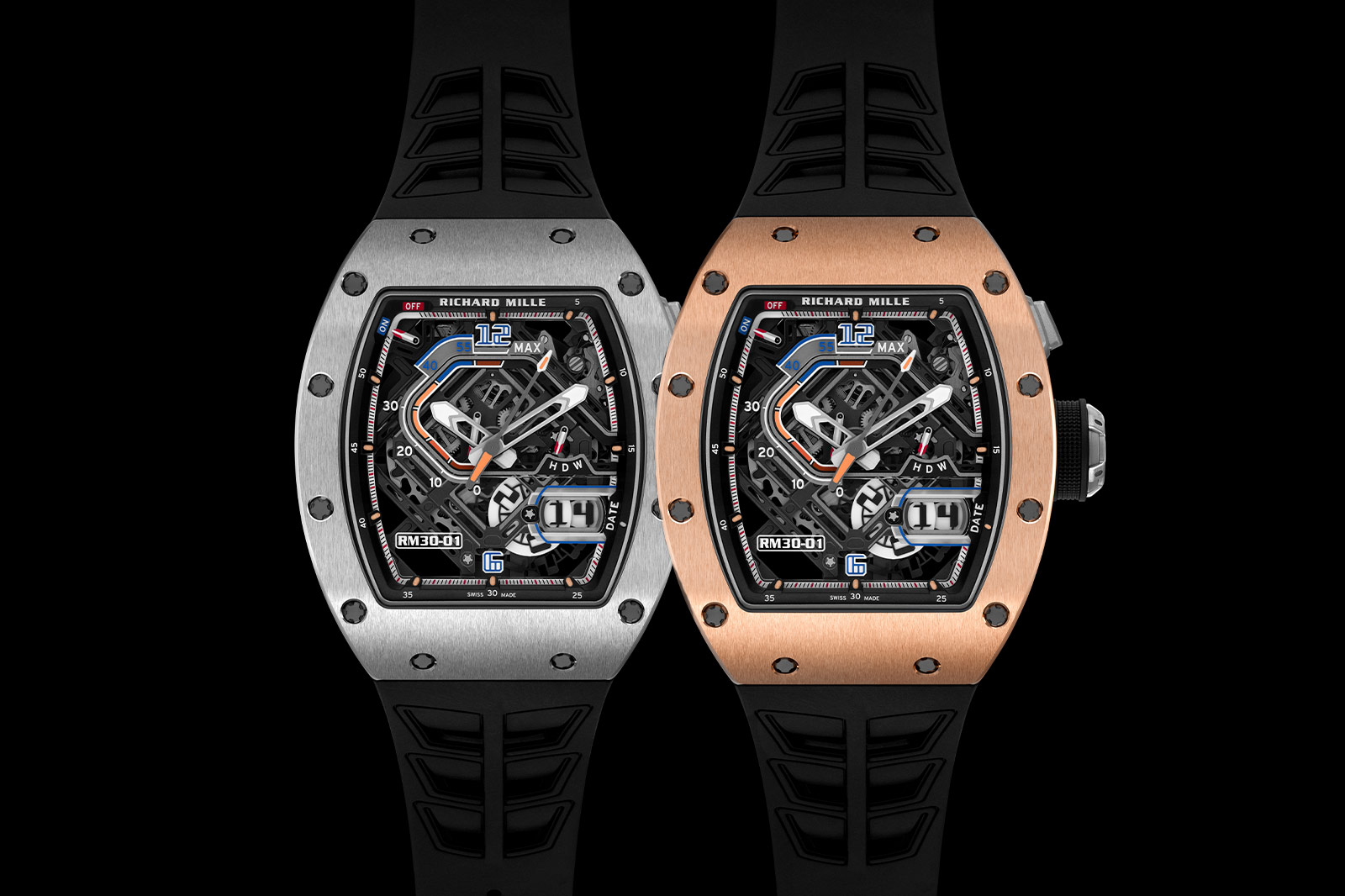
The new Richard Mille RM 30-01 is the next generation of the RM 030 from 2011, which makes logical sense. RM 30-01 features the same functions as it predecessor but has had a major aesthetic updates that make it feel like a different beast all together. Considering that the RM 030 has been a staple part of Richard Mille’s collection for over a decade, it’s about time it saw an update.
There are two versions of the new watch available. The first has a full titanium case while the second has a red gold bezel and caseback for a more luxurious flair. Both are decorated with a dozen screws along the edges of the tonneau shape. In terms of size, it’s fairly large with dimensions measuring 42 x 49.94 x 17.59mm. So far, so Richard Mille. What makes the RM 30-01 stand out from any other RM is the dial display.
At its core, the dial is a relatively simple skeleton display featuring central hours, minutes and seconds along with an oversize date, function selector, power reserve indicator and clutch engagement indicator. What makes the display feel dynamic is the fact that the components and bridges have been arranged in a specific angular pattern so that the dominant shape is a diamond. This is particularly apparent if you follow the line of the power reserve indicator or the main bridges that run in straight lines from 12 o’clock to 3 to 6 to 9 and back to 12.
This arrangement of the skeleton display gives the RM 30-01 a highly technical appearance. It looks more like a circuit board than a movement with wires connecting the various functions. It’s very distinctive and almost disguises the fact you’re looking at a skeleton calibre. Specifically, it’s the calibre RMAR2, an updated version of the RMAR1 from the RM 030. Both the new calibre and the older one are notable for using declutchable rotors.
In the same way that the clutch pedal engages and disengages the gears of your car, the clutch here is used to engage or disengage the winding rotor. The way it operates is that once the power reserve reaches its max threshold at 55-hours the rotor automatically disengages and then when the reserve drops below 40-hours it re-engages. You’ll spot that these two points are specially marked on the power reserve indicator. The concept behind this design is to prevent the movement being at risk of over-winding while also keeping the power reserve high enough to provide optimum torque to the system.
It’s worth pointing out that most automatic watches have mechanisms in place to prevent over-winding and the most common one is a system known as a slipping mainspring. A combination of a sliding flange and grease allows the mainspring to slip, preventing it from winding any further. But this system can be abrasive to the movement and create debris, which is what Richard Mille’s gear style clutch is designed to prevent.
I wouldn’t say that the RM 30-01 is the most exciting Richard Mille launch of the year, it lacks a little of the drama of, say, a Quartz TPT model. However, as a baseline entry level RM, it’s really solid. Although perhaps the idea of an “entry level” RM doesn’t really exist since it has a price tag over £200,000.
Price & Specs:
Model: Richard Mille RM 30-01
Case/dial: 42mm x 49.94mm x 17.59mm full titanium case or titanium case with red gold caseback and bezel, skeletonised dial
Water resistance: 50m (5 bar)
Movement: Richard Mille calibre RMAR2, automatic with declutchable rotor, 38 jewels
Frequency: 28,800 vph (4 Hz)
Power reserve: 55h
Functions: Hours, minutes, seconds, date, function selector, clutch engagement indicator, power reserve indicator
Strap: Black rubber
Price/availability: Price on request
More details at Richard Mille.
Oracle Time